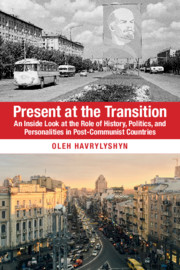 Present at the Transition
Present at the Transition Book contents
- Present at the Transition
- Present at the Transition
- Copyright page
- Dedication
- Contents
- Figures
- Tables
- Preface
- Acknowledgments
- Abbreviations
- Introduction
- Part I The Diverse Paths Taken in Transition
- Part II Choice of Strategy
- 3 Historical Legacies
- 4 Reform Commitment of Political Leaders and Populations
- 5 The Role of Technocrats
- 6 External Incentives and Pressures
- Part III Domestic Vested Interests and Reforms
- Part IV Outcomes and Prospects
- Bibliography
- Index
6 - External Incentives and Pressures
from Part II - Choice of Strategy
Published online by Cambridge University Press: 04 May 2020
- Present at the Transition
- Present at the Transition
- Copyright page
- Dedication
- Contents
- Figures
- Tables
- Preface
- Acknowledgments
- Abbreviations
- Introduction
- Part I The Diverse Paths Taken in Transition
- Part II Choice of Strategy
- 3 Historical Legacies
- 4 Reform Commitment of Political Leaders and Populations
- 5 The Role of Technocrats
- 6 External Incentives and Pressures
- Part III Domestic Vested Interests and Reforms
- Part IV Outcomes and Prospects
- Bibliography
- Index
Summary
A widespread criticism persists that international institutions – the IMF, the World Bank, and the EU) “imposed” the neoliberal model of the market on countries, often causing great pain to people. Chapters 1 and 2 showed that, on the contrary, pain was greatest not where reforms were fastest, but where they were gradual and partial. This chapter discusses how in fact foreign influences interacted with domestic policy choices and historical forces, concluding that reforms could not easily be forced where leaders wanted to move slowly, and where they chose rapid reforms they often moved even faster than recommended by external conditionality. Notably, one aspect in which the IMF succeeded in convincing virtually all transition countries was the need for budgetary and monetary discipline to control inflation; the three- to four-digit inflation of the early nineties was effectively under control by about 2000 – with many countries below 10 percent and others only slightly above. The World Bank and EBRD focused on other aspects of reform with mixed success, while the most effective incentives/pressures were those of EU membership requirements, often called the EU anchor.
- Type
- Chapter
- Information
- Present at the TransitionAn Inside Look at the Role of History, Politics, and Personalities in Post-Communist Countries, pp. 130 - 154Publisher: Cambridge University PressPrint publication year: 2020
